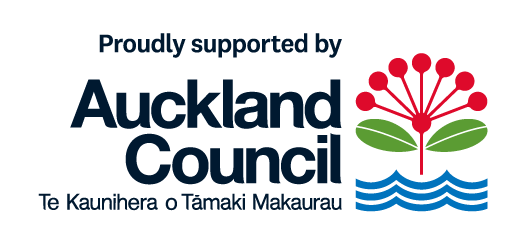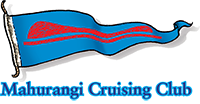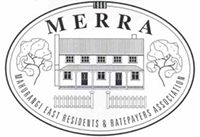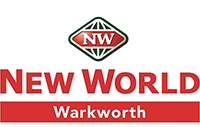Re-imagining the Mahurangi Regatta beyond coastal trail
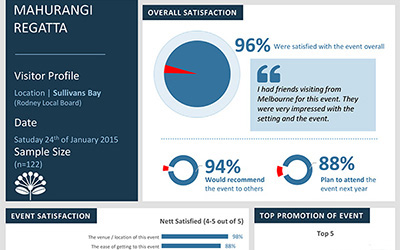
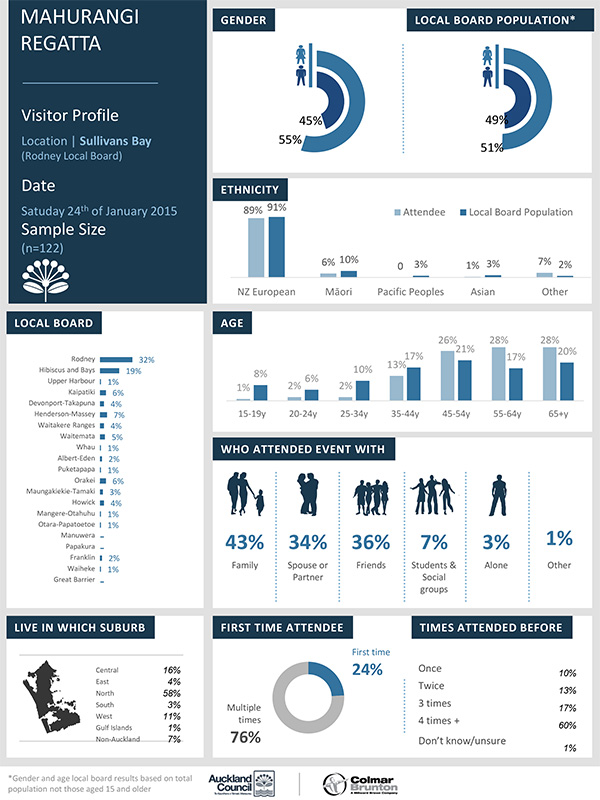
Pleasing Statistics: Perhaps the single most surprising statistic from the survey conducted at this year’s regatta is the number of first-time visitors—32%—but then again, comments along the lines of ‘We had no idea there was a regatta on, and we have had the most marvellous time, and the children have all got certificates from the beach events!’ are heard regatta after regatta. survey Auckland Council – Colmar Brunton
That the Mahurangi Regatta is a regional event is beyond dispute.
The venerable event’s region-wide appeal is now backed up by data, collected at this year’s regatta by Auckland Council following its decision to grant $4000 towards the costs of hosting the 2015 prize-giving dance at Scotts Landing.
Of the 122 regatta-goers surveyed by Colmar Brunton, only 32% were from Rodney, confirming a pattern that extends at least as far back as the 1901 event, reported in the inaugural edition of the Rodney Timesthen, the Rodney and Ōtamatea Times:
Many Auckland yachtsmen [sans typo], were recorded at the 1901 event, despite the possible inference in the excerpt above that they had yet to respond. What did majorly increase the popularity of the event for Aucklanders, was the 1979 decision by Mahurangi Action, which had revived the event two years earlier, to always hold the regatta on the Saturday of Auckland Anniversary weekend—traditionally it had been held on the first weekend after Christmas with a favourable tide. The change made the Mahurangi Harbour the perfect destination for yachtsmen wanting to join the traditional last-long-weekend-of-the-summer city exodus, but still be within striking distance of the Auckland Anniversary Regatta, on the Monday.
Now, with the 40th anniversary of the regatta’s revival looming, the event is poised, potentially, to further evolve—into an Auckland Council-supported ‘significant’ regional event. At least that is the suggestion of Rodney Local Board members, who initiated an exploration with the council-controlled organisation Auckland Tourism, Events and Economic Development. The event would become the sub-region’s première annual event, and with an appropriate strategy, could be of considerable economic, environmental and social benefit to the Mahurangi catchment.
In the early years of the revival it was necessary to vigorously advertise the event, and even to erect signs at the highway, given that the Mahurangi Regional Park was not officially open to the public, and few Aucklanders knew that the city’s best kept secret lay within sight less than two minutes up an obscure unsealed rural road with its then obscure name—Pukapuka. In the third and fourth decades of its revival, the goal of the Mahurangi Regatta’s organisers has been to make the regatta better, rather than bigger. Although better does inevitably mean more attractive and therefore somewhat bigger, no one was keen to add to the attendant traffic congestion, particularly at Scotts Landing, where it has been found necessary, and resoundingly successful, to lay on a free shuttle bus. But when forced to contemplate crowds one or two times greater than those at present, what is obvious is that there is plenty of room for more people, just not more cars.
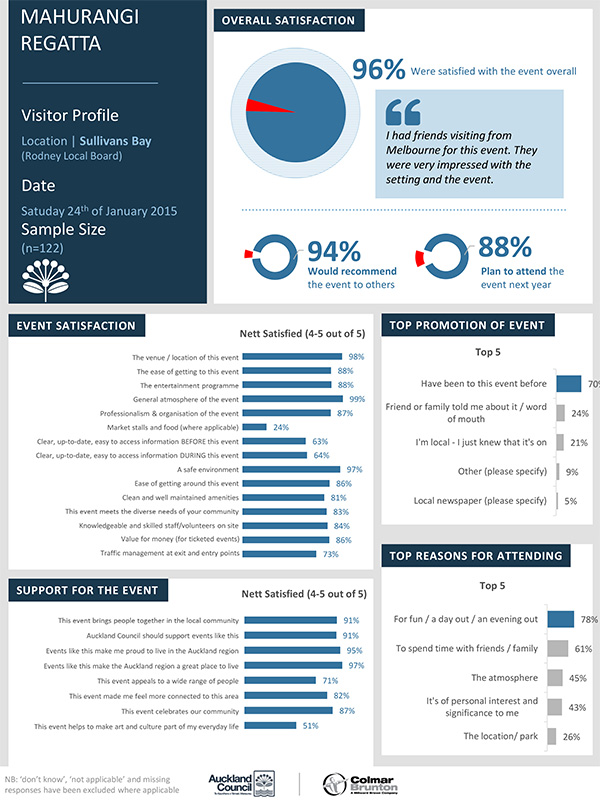
Not Getting Too Satisfied: With overall satisfaction with the Mahurangi Regatta sitting at 96%, organisers would have to be brave or stupid to change a thing. But fortune favours the brave, and, along with the Rodney Local Board’s initiative, a major building firm with a local connection, Teak Construction, has committed to providing substantial support for the event over the next nine years, putting it on a solid footing for the first time since Mahurangi Action rose to the challenge of holding the 2004 Mahurangi Regatta Ball, as the grand finale of Warkworth’s 150th anniversary celebrations. survey Auckland Council – Colmar Brunton
The obvious modes of car-free access, of course, are by boat and by bus. The less obvious mode is by foot. When the Mahurangi Coastal Trail opens, Aucklanders will be able to bus to Waiwera, be shuttled to the Judge Arnold Turner Footbridge at Wenderholm, and be within 20 minutes easy walk of their first swim of the day at the pristine Te Muri Beach. By midday, after a further undemanding fifteen minutes, they can be setting out their picnic blankets just over the ridgeline overlooking Sullivans Bay, with the best seats in the house for the start of the Mahurangi Regatta yacht racing, although the kids will probably soon want to join the throng to compete in the perennially popular beach events—spud-and-spoon, three-legged, sack, etcetera races—that run from
Savvy regatta-goers will walk a further kilometre to ‘The Gods’ of Tungutu Point, for a drone’s-eye view of the spectacle. But, in truth, punters are spoiled for choice, given that Sullivans Bay is a natural amphitheatre for the Mahurangi Regatta and its start–finish line, presided over by the reconstructed scow, the Jane Gifford. Later in the afternoon, visitors will have a choice: walk or bus home, or take the cross-harbour ferry to Scotts Landing, be entertained by the prize giving and dance until late, and bus home from there, or to lodgings on the Mahurangi Peninsula or Warkworth. Or be ferried back across the harbour to camp at Sullivans or Mita bays, or at Te Muri.
Walking and tramping clubs are tipped to be the early adopters of the opportunities that the Mahurangi Coastal Trail will open up. And as an alternative to walking from Waiwera or Wenderholm, regatta-goers will also have the option of walking from Pūhoi, or horse-riding from there, along the missing section of Te Araroa with its panoramic rural, river and coastal views from the Te Muri ridgeline.
The traditional mode of reaching the regatta, of course, was downriver from Warkworth, particularly, during the period the town was her home port, aboard the Jane Gifford. The man who managed the resurrection of the dreadfully deteriorated scow, Peter Thompson, hopes to soon begin navigational dredging of the Mahurangi River. This will enable a ferry service between Warkworth and the regatta to run all day.
If, out of the blue, locals and regatta-goers were polled as to whether they were in favour of a doubling or trebling of Mahurangi Regatta attendees, the percentage in favour would probably be even less than that favouring a flag change. Locals, while only making up a tiny minority, arguably, are due a disproportionate say, given the impact the event has, on the day. But here a leaf can be taken out of the regatta manual in respect to traffic congestion at Scotts Landing. The shuttle there proved to be pivotal in gaining the support and participation of locals, who now, thanks to the service, are conveyed to the prize giving and dance, and home again, without having to stress, as the day wears on, about the rapidly decreasing likelihood of finding parking within a kilometre of the landing. Although some still elect to walk, it is neither safe, pleasant nor healthy sharing the narrow dusty roadway with city drivers sometimes wildly outside their comfort and competency zone.
A similar service could soon be introduced at Mahurangi West, and, combined with cross-harbour transport, change regatta-day mobility from a challenge to a sheer delight—the other lesson from Scotts Landing is that the brief period of travelling together generates an infectious comradery between locals and locals, and locals and visitors. The beauty of this prospect is that, for the first time since the steamboat era, the harbour will be the unifying element of the Mahurangi community, and that unity can only assist in the long-term campaign to address its elevated sediment accumulation rate.
Rodney Local Board has proved to be a staunch friend of the Mahurangi Regatta, and the suggestion that the event might evolve to welcome more visitors deserves thoughtful consideration—besides, the growth won’t happen overnight. It is now up to the community to rise to the challenge of re-imagining the event as a low-carbon, economically, socially and environmentally friendly exemplar it could become. An early opportunity for a public discussion will be Mahurangi Action’s annual general meeting at 3 pm on Saturday 7 November.
Also for discussion, and ratification, will be the sponsorship deal with the major building firm Teak Construction, which has committed to providing substantial support for the event over the next nine years. The local connection is Teak Construction director and engineer Stuart Charlton, who consummately project-managed the superb community restoration of the Mahurangi West Hall.
In all probability, a consensus will be reached on the substantive issues during the walk, beginning at 11 am that day, of the Mahurangi Coastal Trail that will immediately precede the meeting, over afternoon tea at Scotts Landing.
Mahurangi Regatta supporters and collaborators
Auckland Council
Browns Bay Boating Club
Bucklands Beach Yacht Club
Classic Yacht Association
Corporate AV Services
Devonport Yacht Club
Ester Electrical – Scotts Landing prize-giving-and-dance lighting
Gulf Harbour Yacht Club
Mahurangi Action—principal organiser, revived regatta in 1977
Mahurangi Cruising Club—host club and sailing organiser
Mahurangi East Residents and Ratepayers Association—co-host of prize giving and dance
Mahurangi Oyster Farmers Association
Milford Cruising Club
Nautica Shipping & Logistics
New World Warkworth
Panmure Yacht and Boating Club
Pine Harbour Cruising Club
Prestige Loos
Richmond Yacht Club
Royal New Zealand Yacht Squadron
Sandspit Yacht Club
Teak Construction—principal regatta sponsor
Weiti Boating Club
West City Jazz Orchestra

